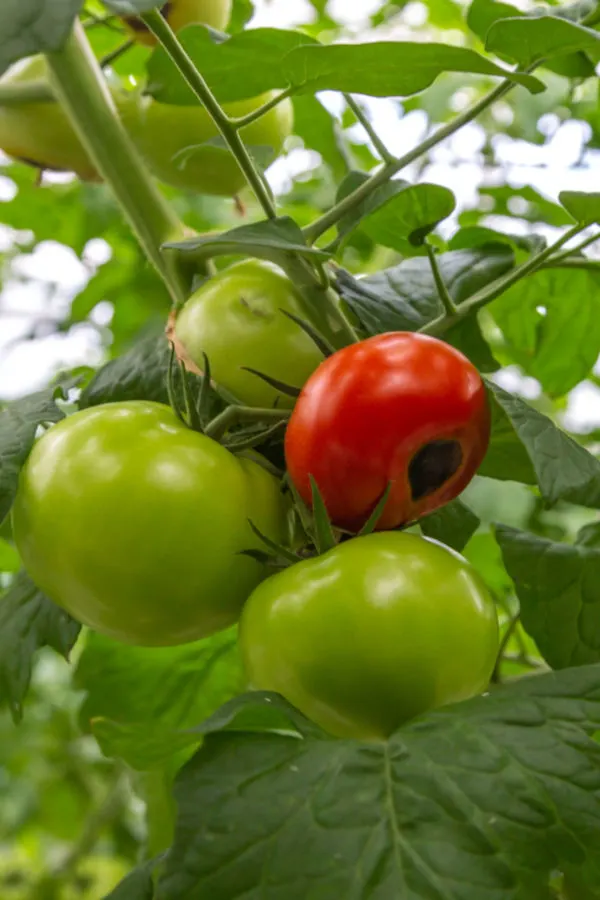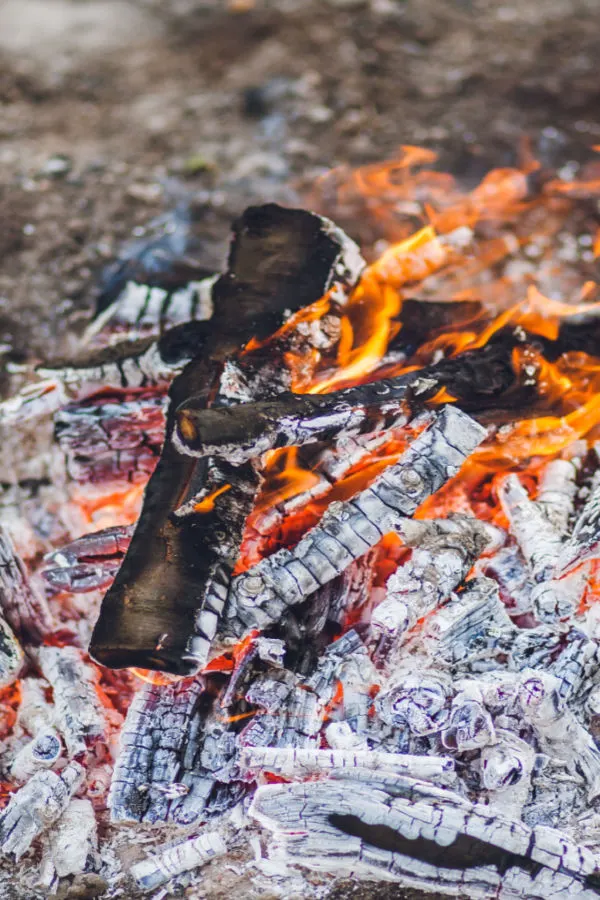Wondering if you can use the wood ashes from your fireplace, wood stove or fire pit to help power your vegetable garden?
The topic of wood ashes and gardening is one that can be confusing for a lot of gardeners. And it certainly triggers a lot of great questions to our inbox. Are ashes good for the soil? Are they bad? Does it make a difference what type of wood the ashes come from? Can you use them directly around plants?
The short answer is that ashes can definitely help the soil in your vegetable garden. Especially if it happens to be lacking in many of the nutrients that ashes can help replenish. But as you will learn in today’s article, how and where you use them is the ultimate key to success!

The makeup of ashes can vary with the wood they were produced from. But with that said, most hardwood and pine wood ashes contain a fair amount of Calcium, Potassium, Magnesium and Phosphorous, along with a slew of other trace elements. All of which happen to be important nutrients for growing vegetables.
What Ashes Provide To The Soil – How To Use Wood Ashes In The Garden
More than any other nutrient, wood ashes help to put calcium back into your garden soil. In fact, calcium makes up nearly one-fifth of the content of wood ash.
Calcium is extremely important in the early development and cell structure of vegetable plants. Without it, plants struggle to build strong stems and cell walls. In addition, calcium also plays a major role in helping to stave off blossom end rot in the fruit of tomato and pepper plants. See: How To Stop Blossom End Rot
Potassium (often called potash) is also extremely important to plants. It helps them to both absorb water and aids greatly in the photosynthesis process. Potash makes up nearly 5% of the content of wood ashes, and can aid garden soil in quickly replenishing the much needed nutrient.
Although the remaining minerals and nutrients found in ashes have a lower concentration percentage, they all certainly do their part to help in recharging your garden soil with energy.

As a final benefit, wood ashes also have the ability to increase the PH of a soil. This can be a huge plus if you happen to have overly acidic soils. It can be a great (and free!) substitute for adding lime to the soil to increase the overall PH.
A good rule of thumb is to use four to five parts wood ash for every part of lime you would have used. Before applying, it is best to have the soil tested to know your overall PH. If your PH already happens to be higher, the wood ashes are best omitted.
A Few Cautions When Using Ashes – How To Use Wood Ashes In The Garden
Although in most cases wood ashes can be beneficial to both the soil and the plants that grow in them, there are a few instances where you need to use caution.
Since wood ashes raise the PH of soil, they are not a good choice for using around any acid-loving plants. Pine trees, azaleas, camellia bushes, blueberries, and other plants that prefer a more acidic soil should never have the soil around them treated with wood ash.
Finally, it always best to know exactly where your wood ashes come from. Wood ash from pallets or commercially treated wood products should always be avoided. They can contain chemicals that can be harmful to both you, your soil and your plants.

For safety reasons and best results, stick to using ash from typical fires in your fireplace or fire pit where no other products (i.e. cardboard, plastics, etc.) have been burned along with the wood. Now that we have covered the advantages and limitations of using wood ashes in your garden, let’s take a look at a few specific uses where they are most effective.
How & Where To Use Wood Ashes In The Garden
Applying Wood Ash To An Entire Garden
One of the best ways to use ashes is by applying them as an overall treatment to your garden soil in the spring or fall. This can help to rejuvenate the soil without the need for chemical fertilizers. But the key is to not add too much to the soil to change its PH balance.
As a rule of thumb, if your soil’s PH is close to neutral, spread about 10 pounds of ash for every 1000 square feet of garden space. That amounts to enough ash to fill a 5 gallon bucket halfway up. If your soil happens to be on the more acidic side, you can double that to help raise the PH level.
When spreading ash, it is always a good idea to wear gloves, goggles and a dust mask for protection. In addition, spraying the garden to wet it down after applying it will help hold the ashes in place.
Applying Wood Ash On Specific Crops – How To Use Wood Ashes In The Garden
During the growing season, many gardeners use wood ashes to lightly top coat the surface around plants. By doing this, the nutrients slowly leach into the soil to help power the plants. Tomatoes, peppers, cucumbers, lettuce, kale and onions all can benefit from a small amount of ashes around their root zone.

A quarter cup of ashes spread around mature summer vegetable plants can help add calcium and potassium to spur growth and production as well. Simply spread around and scratch into the soil. Again, do not over apply as too much can raise the soil PH too high.
Wood Ash In A Compost Pile – How To Use Wood Ashes In The Garden
Adding the ashes from your fireplace or fire pit to your compost pile is a great way to help power finished compost. As with using in the garden and around plants, moderation is the key.
A compost pile should have no more than five to ten percent of its makeup be wood ashes. Any more than this ratio and you risk raising the PH beyond good growing parameters. When adding ashes, mix the ash thoroughly into the pile to distribute it evenly. A good rule of thumb is to add a pail (2 to 3 gallons) of ashes for every cubic yard of compost.
This will keep the balance it tact, all while adding valuable nutrients to the finished compost. Here is to using wood ashes to help power your garden this year!
Follow Our Facebook Page For Great Gardening Tips And Advice! This Is My Garden Facebook Page
This Is My Garden is a garden website created by gardeners, for gardeners. Jim and Mary Competti have been writing gardening, DIY and recipe articles and books and speaking for over 15 years from their 46 acre Ohio farm. They publish three articles every week, 52 weeks a year. Sign up today to follow via email, or follow along!
